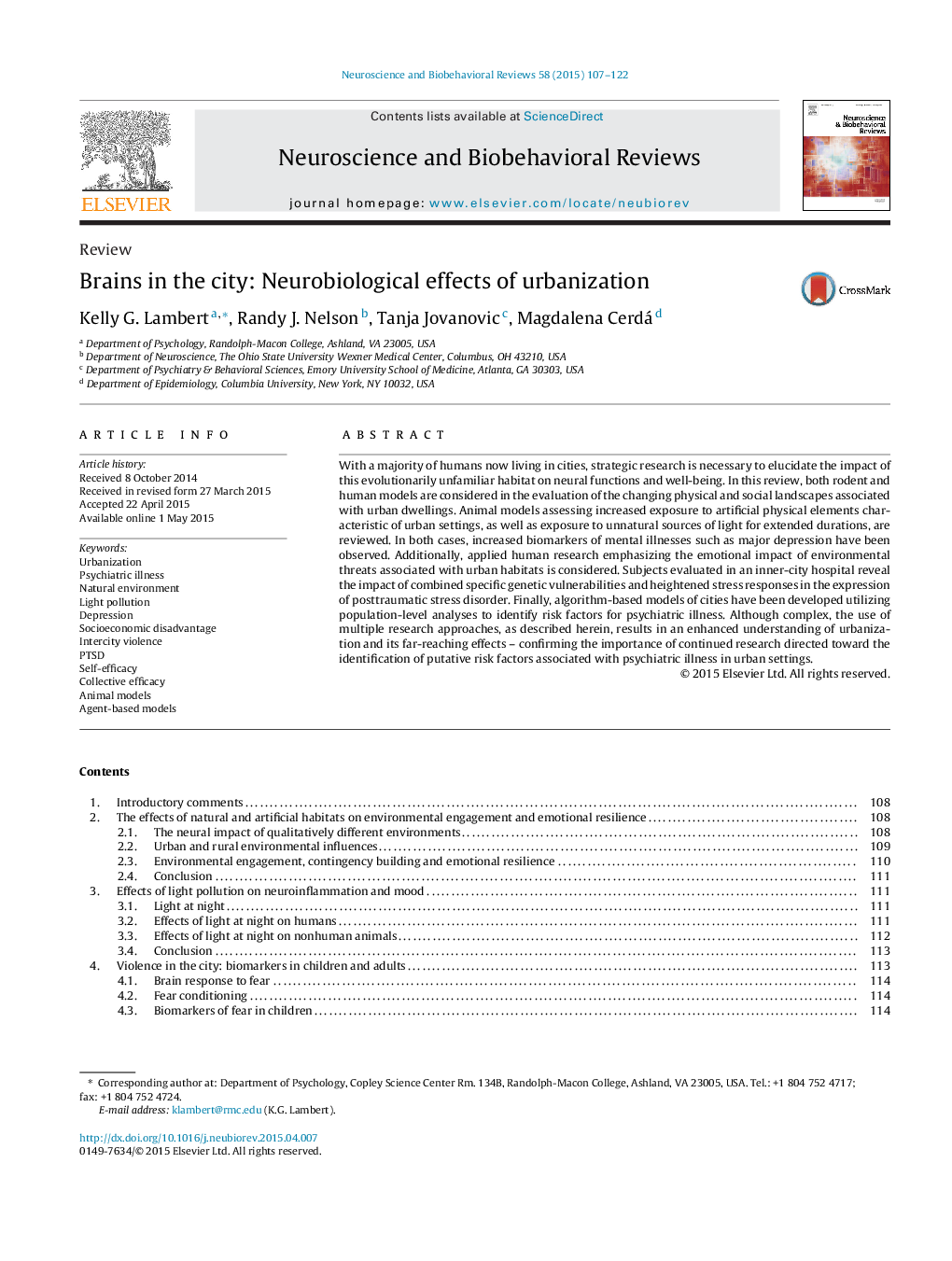| Article ID | Journal | Published Year | Pages | File Type |
|---|---|---|---|---|
| 937531 | Neuroscience & Biobehavioral Reviews | 2015 | 16 Pages |
•Natural-enriched environments are associated with emotional resilience.•Depressive symptoms are observed in rodents exposed to light at night.•Exposure to threatening stimuli in cities has been linked to PTSD.•Population-based analyses emphasize threats of urbanization on mental health.
With a majority of humans now living in cities, strategic research is necessary to elucidate the impact of this evolutionarily unfamiliar habitat on neural functions and well-being. In this review, both rodent and human models are considered in the evaluation of the changing physical and social landscapes associated with urban dwellings. Animal models assessing increased exposure to artificial physical elements characteristic of urban settings, as well as exposure to unnatural sources of light for extended durations, are reviewed. In both cases, increased biomarkers of mental illnesses such as major depression have been observed. Additionally, applied human research emphasizing the emotional impact of environmental threats associated with urban habitats is considered. Subjects evaluated in an inner-city hospital reveal the impact of combined specific genetic vulnerabilities and heightened stress responses in the expression of posttraumatic stress disorder. Finally, algorithm-based models of cities have been developed utilizing population-level analyses to identify risk factors for psychiatric illness. Although complex, the use of multiple research approaches, as described herein, results in an enhanced understanding of urbanization and its far-reaching effects – confirming the importance of continued research directed toward the identification of putative risk factors associated with psychiatric illness in urban settings.
